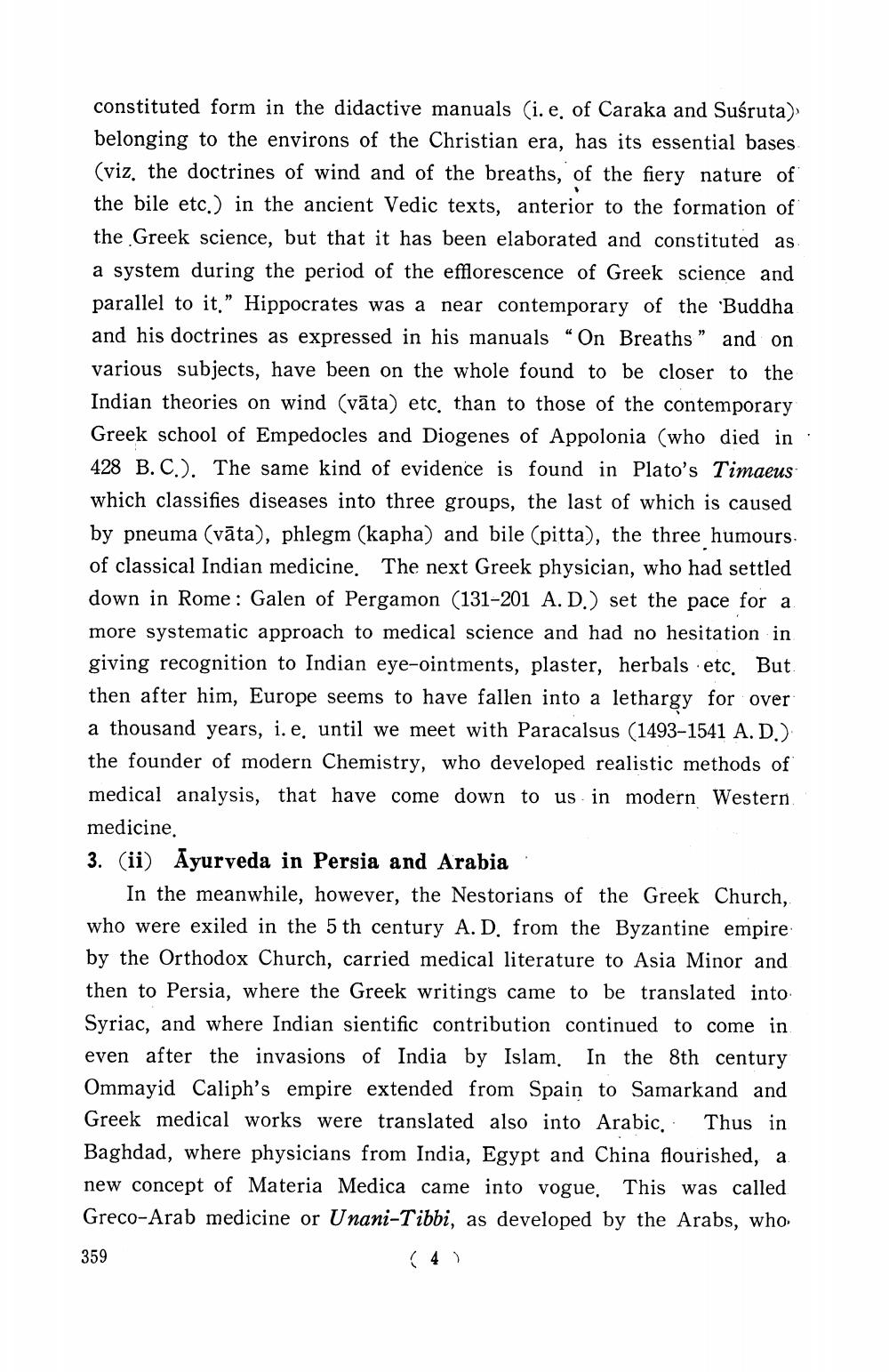Book Title: Traditional System Of Indian Medicine Ayurveda The Background Author(s): V V Gokhle Publisher: V V Gokhle View full book textPage 5
________________ constituted form in the didactive manuals (i. e, of Caraka and Suśruta)> belonging to the environs of the Christian era, has its essential bases (viz. the doctrines of wind and of the breaths, of the fiery nature of the bile etc.) in the ancient Vedic texts, anterior to the formation of the Greek science, but that it has been elaborated and constituted as. a system during the period of the efflorescence of Greek science and parallel to it." Hippocrates was a near contemporary of the 'Buddha and his doctrines as expressed in his manuals "On Breaths" and on various subjects, have been on the whole found to be closer to the Indian theories on wind (vāta) etc. than to those of the contemporary Greek school of Empedocles and Diogenes of Appolonia (who died in 428 B. C.). The same kind of evidence is found in Plato's Timaeus which classifies diseases into three groups, the last of which is caused by pneuma (vāta), phlegm (kapha) and bile (pitta), the three humours. of classical Indian medicine. The next Greek physician, who had settled down in Rome: Galen of Pergamon (131-201 A. D.) set the pace for a more systematic approach to medical science and had no hesitation in giving recognition to Indian eye-ointments, plaster, herbals etc. But. then after him, Europe seems to have fallen into a lethargy for over a thousand years, i. e, until we meet with Paracalsus (1493-1541 A. D.). the founder of modern Chemistry, who developed realistic methods of medical analysis, that have come down to us in modern Western. medicine. 3. (ii) Ayurveda in Persia and Arabia In the meanwhile, however, the Nestorians of the Greek Church, who were exiled in the 5 th century A. D. from the Byzantine empire by the Orthodox Church, carried medical literature to Asia Minor and then to Persia, where the Greek writings came to be translated into Syriac, and where Indian sientific contribution continued to come in. even after the invasions of India by Islam. In the 8th century Ommayid Caliph's empire extended from Spain to Samarkand and Greek medical works were translated also into Arabic, Thus in Baghdad, where physicians from India, Egypt and China flourished, a new concept of Materia Medica came into vogue. This was called Greco-Arab medicine or Unani-Tibbi, as developed by the Arabs, who 359 (4)Page Navigation
1 ... 3 4 5 6 7 8 9 10 11 12 13 14 15 16 17
